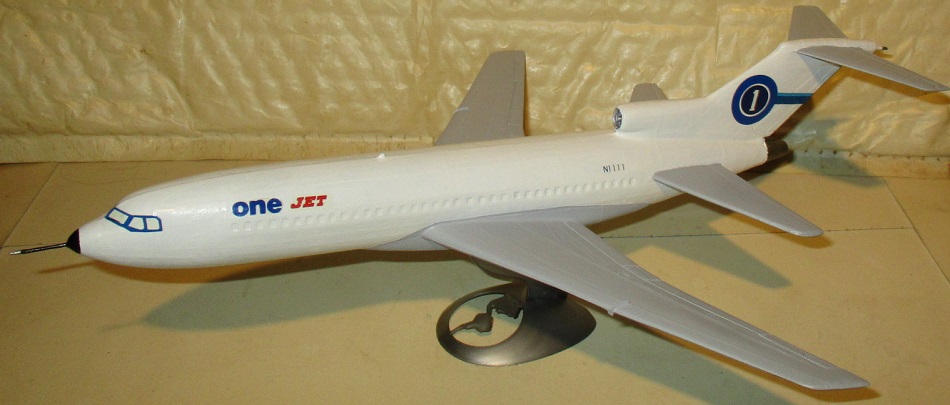
Conceived as a low-cost follow-on to the 727 since it was at least two engines cheaper,
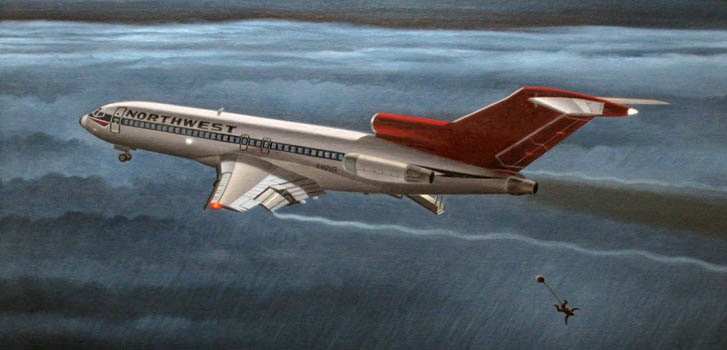
the Boeing 7one7 was designed at the request of one truly tight-fisted customer and would test the limits of single-engine reliability.
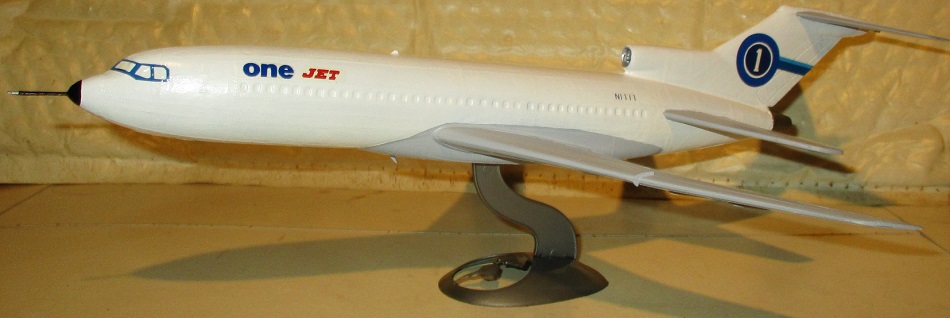
Having only one power-plant to its more famous stable-mate's three, this radical departure in passenger safety was only flown by a single carrier, the aptly-named One Jet budget airline.
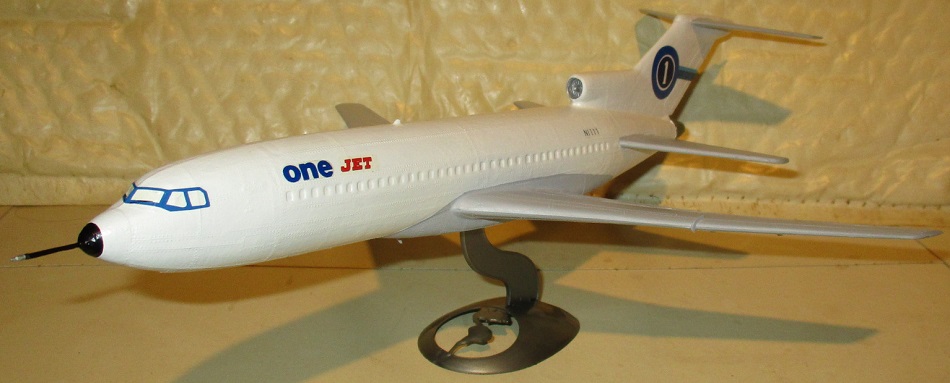
A typo in new FAA ETOPS guidance opened a very short window where large, commercial single-engine jet airliners became legal if not entirely logical.
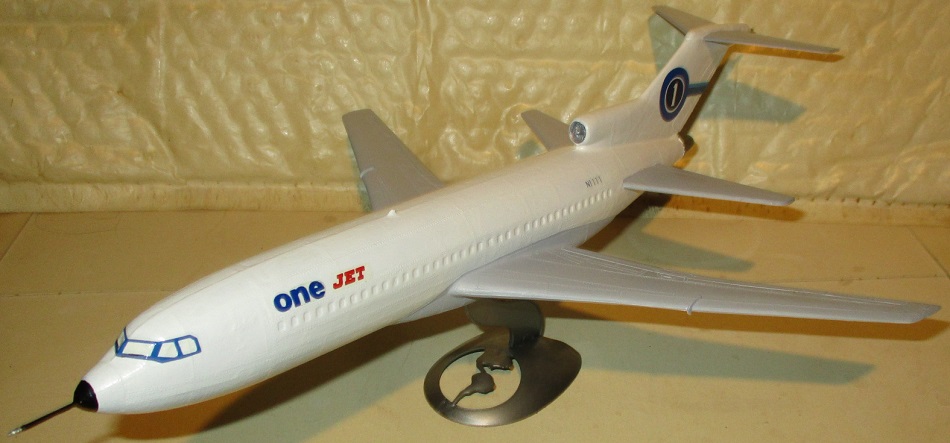
Boeing was able to quickly take advantage of this by tweaking their tri-jet 727 into a new design known as the 7one7 in a profound piece of penny-pinching with sadly predictable results.

In a very weak attempt to compensate for the loss of power and to provide greater control in the vertical axis, Boeing developed the infamous "I" tail by adding extra horizontal stabilizers replacing the two lower aft engines of the 727.
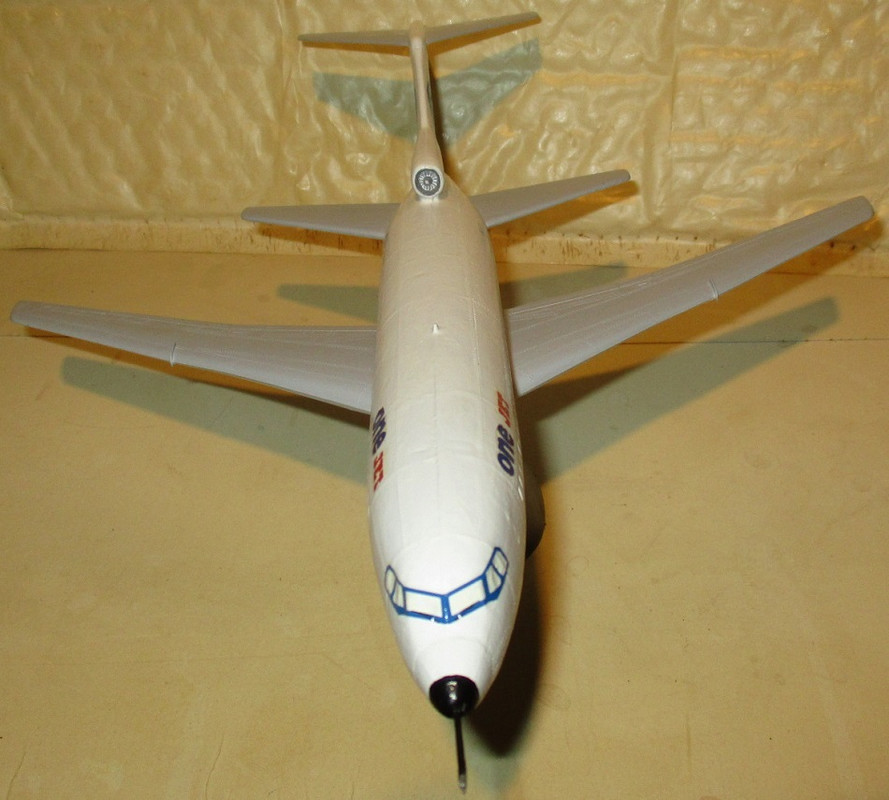
The nose was given a long probe which, while providing key flight data, also had the benefit of potentially skewering inattentive ramp workers.
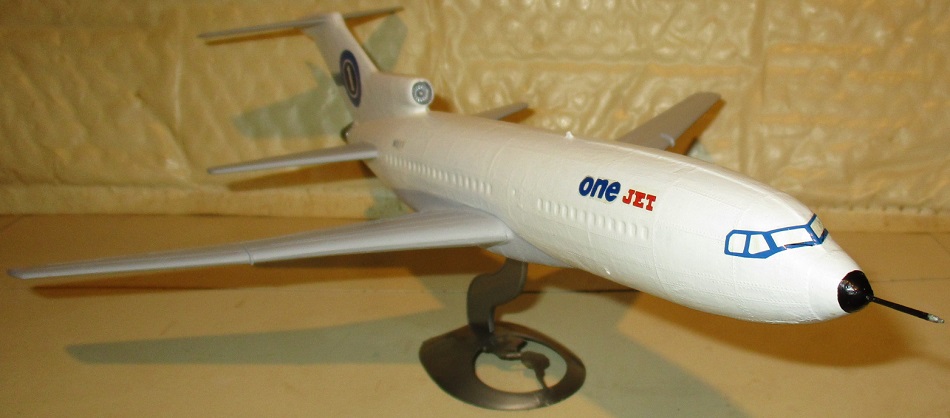
These minor modifications of course in no way made up for the aircraft's main deficiency, but One Jet went ahead and ordered ten Boeing 7one7s anyway.
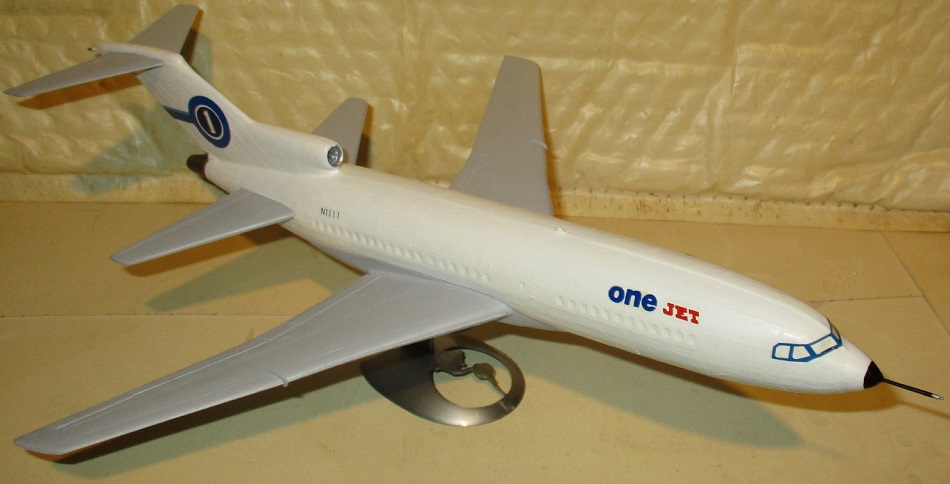
Unfortunately, before the second 7one7 could be delivered, the airline would suffer a well-publicized tragedy and be forced into premature liquidation. It wasn't a crash or a technical problem with the new 'plane that doomed One Jet but a catastrophic catering failure. Some fish that was past its prime made it onto the menu and the pilots, crew, and passengers had all eaten the in-flight blue-plate botulism special.

They experienced immediate, violent symptoms and when the plane finally landed the entire cabin had been "redecorated". While large, floor-to-ceiling abstract murals may have been avante`garde for the era, this wasn't exactly art and the flying public stayed away in droves, forcing One Jet to fold.
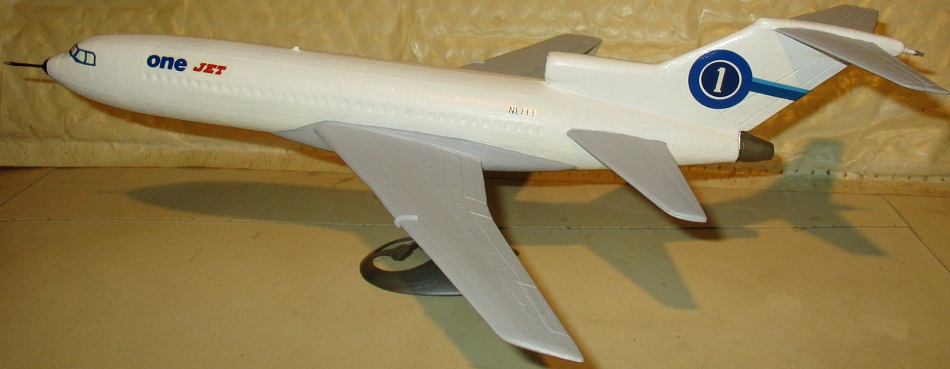
The sole 7one7 in service was converted back to 727 standard as were the rest on order which is why nothing exists of this majestic single-engine jetliner today except an overly-optimistic travel agent's desk model.
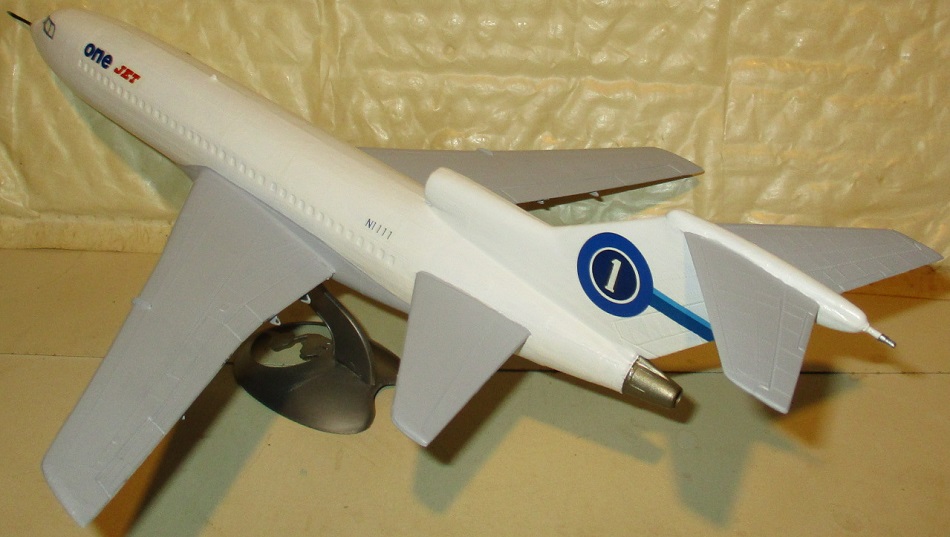
The aircraft is depicted with all of the window shades drawn, a traditional sign of mourning, perhaps for what might have been.

Brian da Basher